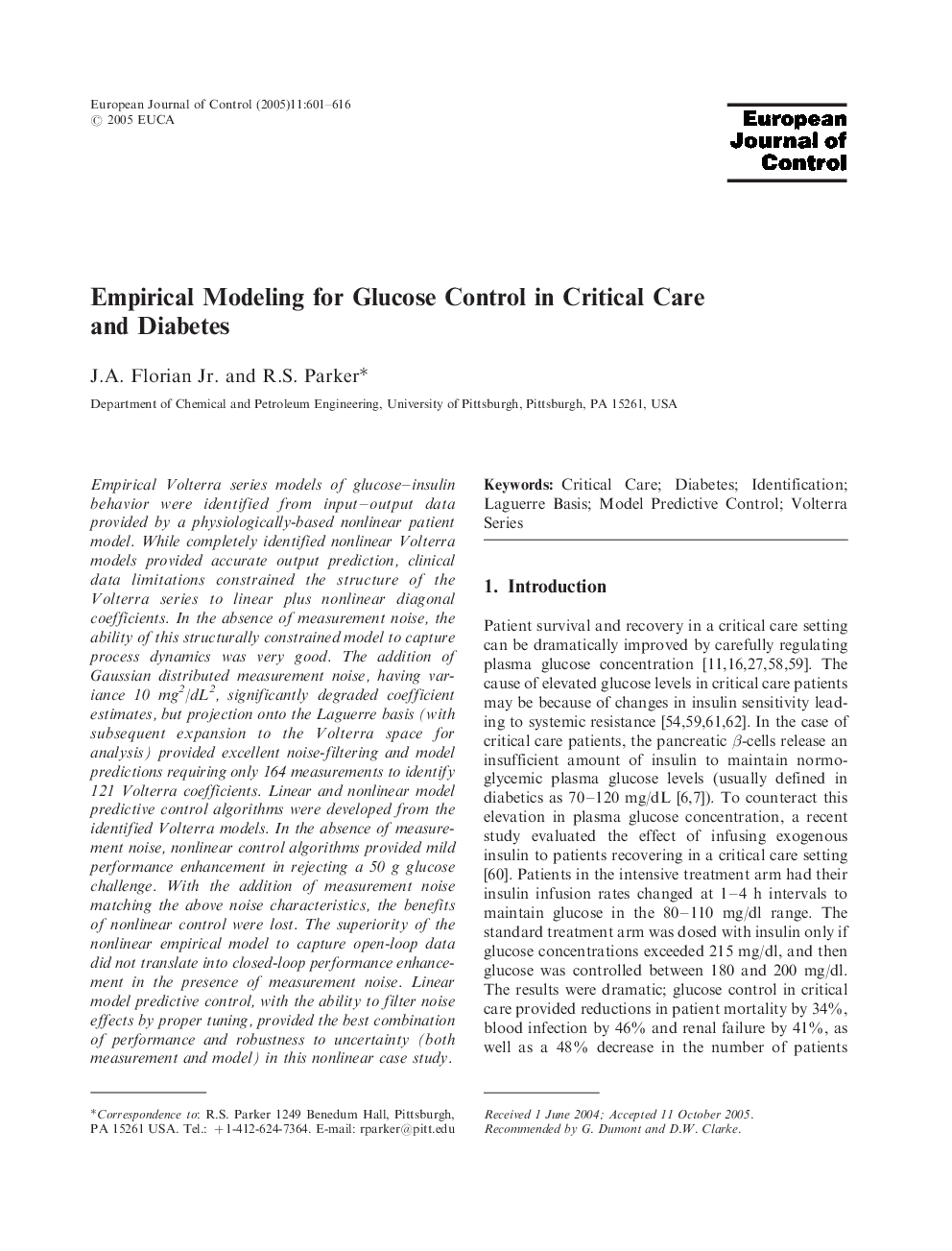| Article ID | Journal | Published Year | Pages | File Type |
|---|---|---|---|---|
| 9698046 | European Journal of Control | 2005 | 16 Pages |
Abstract
Empirical Volterra series models of glucose-insulin behavior were identified from input-output data provided by a physiologically-based nonlinear patient model. While completely identified nonlinear Volterra models provided accurate output prediction, clinical data limitations constrained the structure of the Volterra series to linear plus nonlinear diagonal coefficients. In the absence of measurement noise, the ability of this structurally constrained model to capture process dynamics was very good. The addition of Gaussian distributed measurement noise, having variance 10Â mg2/dL2, significantly degraded coefficient estimates, but projection onto the Laguerre basis (with subsequent expansion to the Volterra space for analysis) provided excellent noise-filtering and model predictions requiring only 164 measurements to identify 121 Volterra coefficients. Linear and nonlinear model predictive control algorithms were developed from the identified Volterra models. In the absence of measurement noise, nonlinear control algorithms provided mild performance enhancement in rejecting a 50Â g glucose challenge. With the addition of measurement noise matching the above noise characteristics, the benefits of nonlinear control were lost. The superiority of the nonlinear empirical model to capture open-loop data did not translate into closed-loop performance enhancement in the presence of measurement noise. Linear model predictive control, with the ability to filter noise effects by proper tuning, provided the best combination of performance and robustness to uncertainty (both measurement and model) in this nonlinear case study.
Related Topics
Physical Sciences and Engineering
Engineering
Control and Systems Engineering
Authors
J.A. Jr, R.S. Parker,
